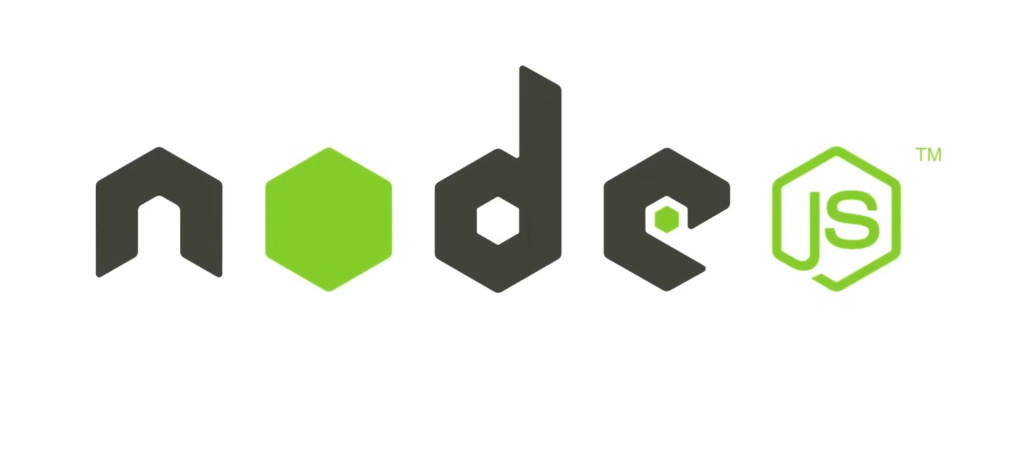In the realm of software development, a plethora of programming languages, frameworks, and technologies await exploration. One recurrent quandary that developers encounter is the selection of a technology stack worthy of their investment in time and expertise. Today, we aim to tackle a pertinent question: Node.js or Spring – which deserves your focus?
Node.js and Spring stand as prominent contenders for crafting web applications and APIs, each boasting distinct strengths, applications, and ecosystems. To make a judicious choice, one must grasp the nuances of both technologies and reflect on individual objectives and criteria.
Within this exhaustive exploration, we shall dissect Node.js and Spring from multiple perspectives, juxtaposing them in terms of performance, scalability, learning curve, community backing, and more. By the conclusion, you’ll be better equipped to discern which technology resonates more harmoniously with your developmental aspirations.
Exploring Node.js and the Spring Framework
Node.js framework
Node.js emerges as a revolutionary, open-source, and cross-platform runtime framework, enabling developers to craft server-side and network applications utilizing JavaScript. Its inception by Ryan Dahl in 2009 marked a pivotal shift in web development paradigms. Node.js is distinguished by its asynchronous, event-driven architecture, which significantly enhances its efficiency in managing I/O-bound operations, including the simultaneous handling of web application requests.
Renowned for its rapid processing capabilities and scalability, Node.js serves as an ideal platform for developing real-time applications, APIs, and microservices. It boasts a vibrant and expansive community, offering a wealth of libraries and packages accessible via npm (Node Package Manager), fostering an environment ripe for innovation and collaboration.
Spring framework
Conversely, Spring stands as a versatile, modular framework dedicated to the construction of Java-based enterprise solutions. Conceived by Rod Johnson in 2003, Spring has matured into a comprehensive ecosystem, enriched with a variety of projects and extensions that cater to the evolving demands of modern software development. It provides an extensive array of tools and libraries designed to streamline the development process of intricate, scalable, and maintainable applications.
At the heart of Spring’s philosophy is the emphasis on dependency injection, aspect-oriented programming, and the facilitation of enterprise-grade application development. It advocates for the adoption of design patterns and software development best practices, securing its position as a preferred framework among Java practitioners.
Differences Between Node.js and Spring Framework
| Aspect | Node.js | Spring |
|---|---|---|
| Programming Language | JavaScript: Enables both server-side and client-side scripting. | Java: A Java-based framework. |
| Runtime Environment | Single-threaded event loop for efficient asynchronous I/O operations. | Runs on JVM, ensuring platform independence. |
| Architecture | Event-driven, non-blocking I/O model ideal for simultaneous connections. | Modular, traditional multi-threaded enterprise framework. |
| Concurrency Model | Single-threaded, non-blocking callbacks for concurrent request handling. | Multi-threaded, asynchronous for effective resource use. |
| Community Support | Large, active JavaScript community with extensive npm ecosystem. | Strong, established Java community with numerous resources. |
| Performance | Excelling in I/O-bound tasks with a non-blocking event loop. | High, influenced by JVM settings and application specifics. |
| Ease of Learning | Easy for those familiar with JavaScript. Low entry barrier. | Steeper for Java developers, with benefits of static typing and tooling. |
| Use Cases | Ideal for real-time applications, APIs, and microservices. | Fits enterprise-level applications and large-scale projects. |
| Ecosystem | Vast npm package ecosystem with a variety of libraries. | Comprehensive ecosystem including Spring Boot, Security, Cloud. |
| Scalability | Achievable through clustering, load balancing, and async design. | Supports scalability with Spring Cloud, Boot, and cloud integration. |
| Testing | Supports testing with tools like Mocha, Jasmine for unit/integration tests. | Extensive testing options with JUnit, TestNG for various tests. |
| Security | Dependency management and developer practices impact security. | Built-in security features and frameworks for secure development. |
| Frameworks | Includes Express.js, Nest.js, Hapi.js for web applications and APIs. | Features Spring Boot, MVC, Security, Cloud for diverse applications. |
| Development Speed | Faster for flexible, lightweight projects. | Longer due to Java’s verbosity but robust for large projects. |
| Maintainability | Simpler maintenance for smaller projects. | Suited for complex, long-term projects with its modularity. |
| Popularity | Popular in startups for web and API development. | Favored in enterprises for reliable, maintainable applications. |
Node.js vs. Spring: Which to Learn?
To decide between learning Node.js or the Spring framework, let’s analyze several critical aspects of both technologies.
Programming Language:
- Node.js: Node.js predominantly employs JavaScript as its core programming language. JavaScript is highly versatile, widely adopted, and backed by a robust community with extensive resources. Mastering Node.js entails proficiency in JavaScript, which can also be utilized for front-end development, providing a comprehensive full-stack capability;
- Spring: Spring, on the other hand, is built atop Java, making Java its primary programming language. Despite Java’s longstanding dominance in the enterprise realm, it’s pertinent to acknowledge that Java development often entails more verbose code compared to JavaScript.
Verdict:
If you’re comfortable with JavaScript or keen on learning it, Node.js might be the more enticing option for you. Conversely, if you possess a solid Java background or are primarily focused on developing enterprise-level applications, Spring could align better with your preferences.
Performance and Scalability Comparison: Node.js vs. Spring Framework
- Node.js: Node.js is celebrated for its exceptional performance, owing to its event-driven, non-blocking architecture. It excels in developing real-time applications, APIs, and microservices. However, its single-threaded nature might present limitations when handling CPU-intensive tasks;
- Spring: Spring applications, leveraging Java, are recognized for their stability and scalability. Java’s multithreading capabilities empower Spring applications to efficiently manage heavy workloads. Moreover, Spring offers an extensive ecosystem equipped with tools tailored for building robust and high-performance applications.
Verdict:
If your focus lies on real-time and I/O-intensive applications, Node.js could be the preferred choice due to its strengths in these areas. Conversely, for CPU-intensive workloads or enterprise-level applications demanding scalability, Spring’s performance and scalability features may offer greater advantages.
Learning Curve Analysis: Node.js vs. Spring Framework
- Node.js: JavaScript is widely acknowledged as a beginner-friendly language, particularly suitable for novices. While grasping Node.js’s event-driven model might pose initial challenges, practice renders it more intuitive. The abundance of online resources and tutorials facilitates the learning process, making it easier to access educational materials;
- Spring: Spring, characterized by its expansive ecosystem and diverse components, presents a comparatively steeper learning curve, especially for developers new to Java. However, individuals already acquainted with Java may find transitioning to Spring relatively seamless. While Spring boasts excellent documentation and robust community support, mastering it might necessitate a deeper comprehension.
Verdict:
Node.js emerges as the more beginner-friendly option, owing to JavaScript’s simplicity, making it accessible to newcomers. Conversely, Spring caters to individuals with a strong Java foundation or those aiming for enterprise-level development, offering a pathway to sophisticated application development.
Community and Ecosystem Evaluation: Node.js vs. Spring Framework
- Node.js: Node.js thrives within a lively and engaged community, backed by thousands of open-source packages accessible through npm. This vast ecosystem simplifies the discovery of libraries and tools for virtually any development task. Notably, Node.js benefits from the community’s collaborative spirit, as members readily share knowledge and extend support to fellow developers;
- Spring: Spring enjoys a well-established community presence, particularly renowned within enterprise environments. It offers an abundance of resources, comprehensive documentation, and active support forums. Within Spring’s ecosystem, various projects like Spring Boot, Spring Cloud, and Spring Data enrich the development landscape, empowering developers to craft robust and feature-rich applications.
Verdict:
Both Node.js and Spring Framework boast robust communities, each catering to distinct developer needs. Node.js stands out with its npm ecosystem, renowned for its extensive library offerings. Conversely, Spring’s community shines brightest within enterprise development spheres, reflecting its widespread adoption and support within corporate environments.
Use Case Comparison: Node.js vs. Spring Framework
- Node.js: Node.js excels in crafting real-time applications such as chat platforms, online gaming interfaces, and streaming services. Its asynchronous nature makes it particularly adept at developing APIs and microservices. Startups and smaller enterprises often favor Node.js for its agility and rapid development capabilities;
- Spring: Spring demonstrates its strength in powering enterprise-level solutions, encompassing large-scale web applications, financial platforms, and healthcare systems. With comprehensive support for building intricate, transactional, and mission-critical applications, Spring stands as a preferred choice. Its emphasis on best practices and maintainability renders it ideal for long-term projects.
Verdict:
Node.js is well-suited for real-time applications and smaller-scale projects demanding swift development cycles. Conversely, Spring emerges as the optimal choice for enterprise-grade solutions, characterized by their need for robustness, scalability, and adherence to best practices.
Job Market and Career Prospects: Node.js vs. Spring Framework
- Node.js: Node.js developers are highly sought after, particularly within startup ventures and companies specializing in web development and real-time applications. The enduring popularity of web development ensures a consistent demand for JavaScript skills, including proficiency in Node.js;
- Spring: Spring holds a significant presence in enterprise settings, thereby positioning Spring developers as valuable assets sought by large corporations and businesses. Pursuing a career in Spring development often promises stability and promising long-term prospects, particularly for those inclined towards the enterprise software domain.
Verdict:
The job market landscape varies depending on factors such as geographical location and individual career aspirations. Node.js offers enticing opportunities within web development and startup environments, whereas Spring opens doors to roles within enterprise-level organizations, reflecting diverse career pathways within the software development industry.
The Pros and Cons of Node.js and Spring Framework

Node.js and Spring Framework each come with distinct advantages and disadvantages, necessitating aspiring developers to conduct a thorough evaluation before committing to their learning path. In this segment, we’ll examine the strengths and weaknesses of adopting Node.js and Spring, aiding you in making a well-informed decision.
Advantages and Drawbacks of Node.js
Pros:
- Universality of JavaScript: Node.js enables developers to utilize JavaScript across both client and server environments, facilitating a seamless full-stack development process. This unified language and library usage streamline development workflows for frontend and backend tasks alike;
- Extensive Ecosystem: With the Node Package Manager (NPM) housing one of the largest repositories of open-source packages, Node.js offers access to a diverse array of pre-built modules and tools. This rich ecosystem simplifies development by providing solutions for various functionalities;
- Enhanced Performance: Node.js boasts a non-blocking, event-driven architecture that excels in managing concurrent connections, making it particularly efficient for real-time communication applications like chat platforms and online gaming environments;
- Robust Community Support: Benefitting from an active and vibrant community, Node.js provides developers with abundant resources, tutorials, and forums for troubleshooting and knowledge sharing.
Cons:
- Callback Complexity: Node.js heavily relies on callbacks, which may result in “callback hell”—a situation where nested callbacks make code readability and maintenance challenging, particularly for novice developers;
- Single-threaded Limitations: While Node.js effectively handles I/O-bound tasks, its performance might suffer when tasked with CPU-intensive operations, impacting applications that require substantial computational processing;
- Enterprise Maturity: Compared to established backend technologies like Java and .NET, Node.js is relatively newer, potentially rendering it less appealing to enterprises favoring mature and stable solutions for their projects.
Evaluating the Advantages and Drawbacks of Spring Framework

Pros:
- Robust Community and Comprehensive Documentation: Spring boasts a sizable and engaged developer community alongside extensive documentation and tutorials. This abundance of resources makes it an attractive option for beginners seeking readily available learning materials;
- Enterprise-Grade Capabilities: With its emphasis on stability and robustness, Spring enjoys widespread adoption in enterprise environments. It offers essential features such as transaction management, security measures, and seamless integration with diverse databases and messaging systems, making it well-suited for developing intricate, large-scale applications;
- Modular and Flexible Architecture: Spring’s modular design allows developers to selectively incorporate components tailored to their project’s needs, enhancing adaptability and scalability;
- Seamless Integration with Java Ecosystem: Spring seamlessly integrates with various Java technologies such as Hibernate, JPA, and Java EE, enabling developers to harness the extensive capabilities of the Java ecosystem.
Cons:
- Steep Learning Curve: Spring’s extensive feature set and configuration options can pose challenges for beginners, requiring time and effort to grasp core concepts and best practices effectively;
- Verbose Configuration Requirements: Spring applications often necessitate verbose XML or annotation-based configuration, potentially leading to increased complexity within the codebase and making maintenance more arduous;
- Resource Intensiveness: Java applications, including those developed with Spring, typically exhibit higher memory consumption compared to alternatives like Node.js, potentially resulting in elevated infrastructure costs.
Choosing Between Node.js and Spring
Making a choice between Node.js and Spring for your development journey hinges on your individual objectives and preferences. Node.js stands out for those who lean towards a language-flexible approach, emphasizing JavaScript, the development of real-time applications, and engagement with an active community. Conversely, Spring appeals to those inclined towards enterprise development, with a focus on stability, scalability, and a preference for Java.
Here’s a brief guide to assist in your decision-making process:
| Opt for Node.js if: | Select Spring if: |
|---|---|
| You are enthusiastic about JavaScript or aim to be a versatile full-stack developer. | You possess a robust foundation in Java or prefer Java as your go-to programming language. |
| Your projects include building real-time applications, APIs, or microservices. | Your aspirations are geared towards creating large-scale, enterprise-level applications that require scalability and reliability. |
| You value rapid development cycles and active community support. | You appreciate thorough documentation and a development process grounded in best practices. |
FAQs
Node.js is generally considered easier for beginners due to its simplicity and the widespread popularity of JavaScript.
Node.js has a performance advantage for certain use cases, but Spring’s performance is also commendable. The choice depends on your project’s specific requirements.
Yes, you can use Node.js alongside Java in a project, but it might introduce complexity to your tech stack.
Spring is a robust framework, but it can be used for small projects. However, Node.js’s lightweight nature may be more suitable for such cases.
Yes, both Node.js and Spring developers are in demand, but the market might vary depending on your location and expertise.
Consider your project’s requirements, your familiarity with JavaScript and Java, and the specific features each technology offers.
Conclusion
The software development realm is brimming with numerous technologies, and deciding between Node.js and Spring is no easy feat. It takes understanding the individual characteristics of each technology and aligning them with your career objectives and project requirements to make the right choice. Whether you prefer Node.js for its simplicity and vibrant community or choose Spring for its robustness and enterprise-ready features, both technologies offer various opportunities to master the craft of software development.
